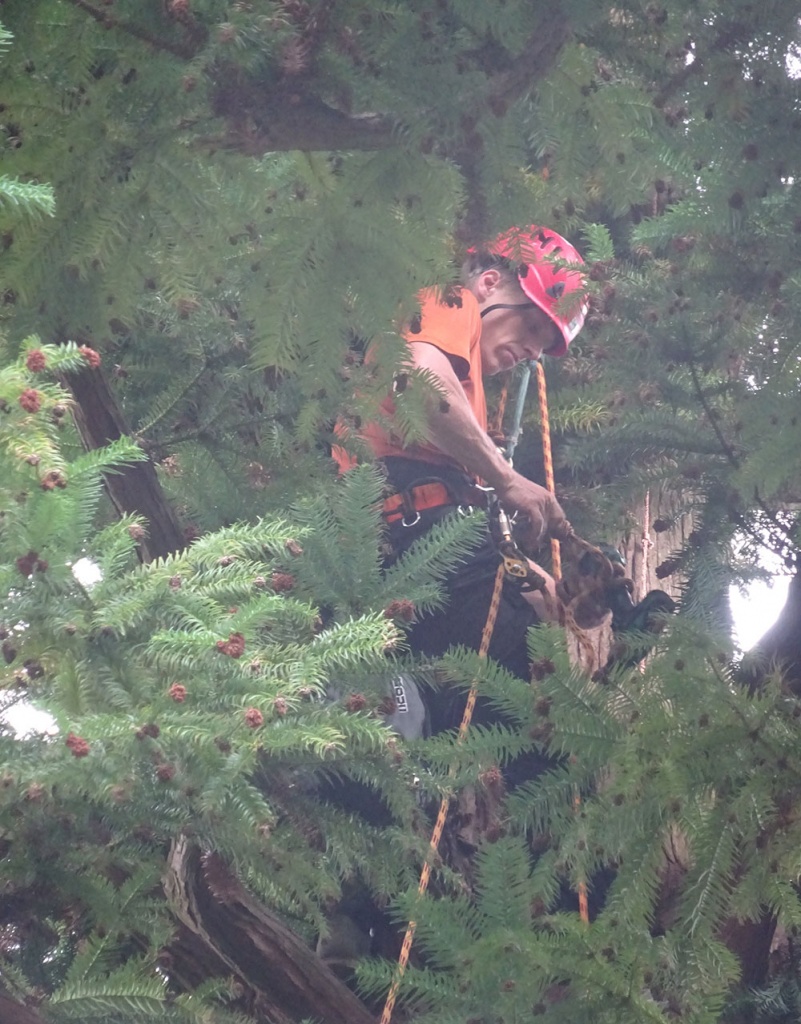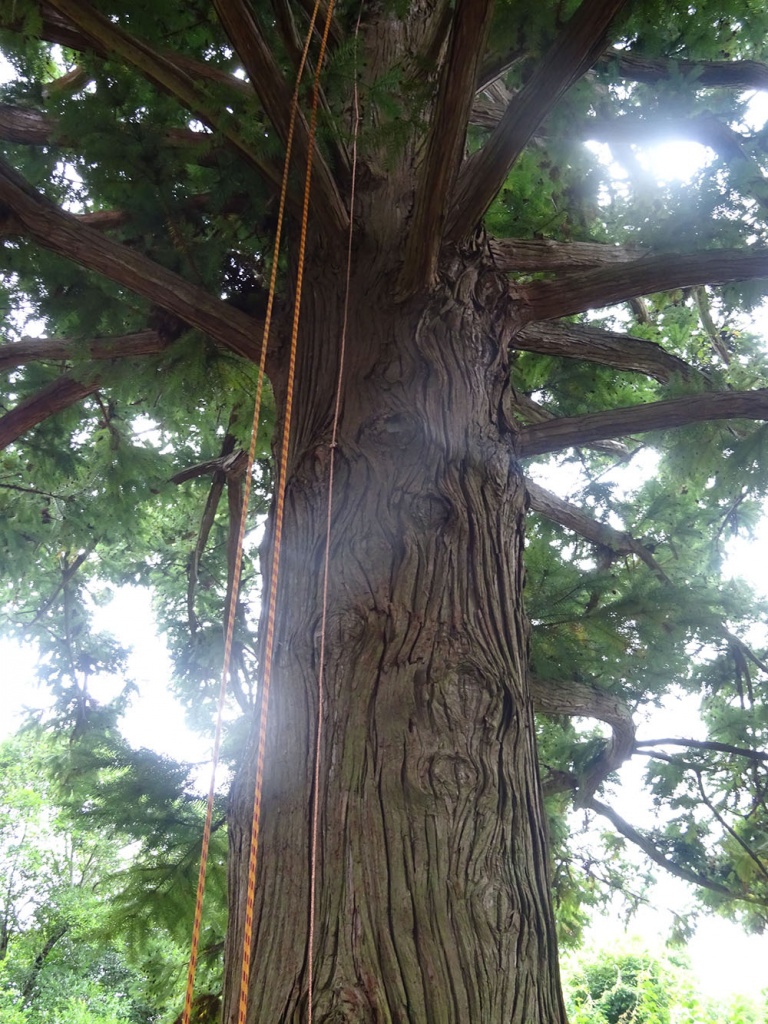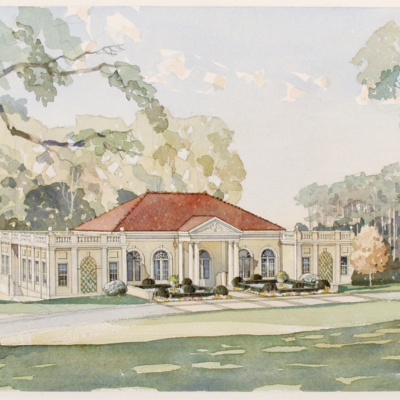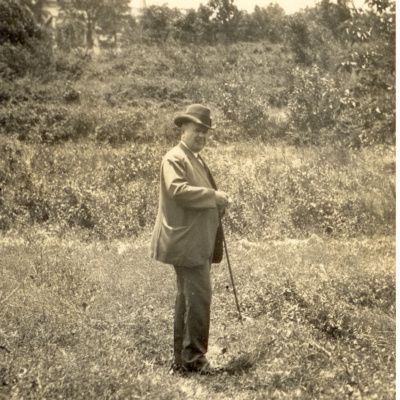Steel Defense

On a warm day in August I decided to take my monthly stroll through the gardens at Hills & Dales. While passing through the Church Garden, branches rustling high in the China fir above caught my eye. I glimpsed a man wearing orange, nimbly climbing with a rope, then he vanished into the deep green branches rimmed with tiny cones. I speculated what a magnificent view he must have, one only seen by soaring birds.
A gardener working nearby provided the perfect opportunity to find out what was going on. What is he doing up at the top of the tree? Jeremy responded: “He’s an arborist from Atlanta and they are installing lightning protection in three of our largest trees: one magnolia, the old ginkgo (which he calls the granddaddy of the garden) and this China fir that dates back to Sarah Ferrell’s time.”
Why are you doing that? “Well just in the last few years we’ve had several lightning strikes at the estate, so we want to protect these old irreplaceable trees. Since the home and garden are on a hill that is regularly watered, they seem to be particularly prone. You know Georgia has lots of spring and summer storms, and it is one of the top fifteen states for lightning. When a strike occurs it can produce temperatures greater than 50,000 degrees Fahrenheit and an electrical charge of 100 million volts.”
So how does the procedure work? “They install a metal tip or air terminal above the highest branch in the tree and attach it to a long braided copper cable that goes down the trunk all the way to the ground. At that point, the cable goes under the surface of the ground and is attached to an eight-foot steel grounding rod. If a lightning strike occurs, the metal is a better conductor than the tree, and the energy of the strike travels down the cable and dissipates into the ground. As a result, the tree branches, trunk and roots are spared.”
What made you do this now, and what are the chances of success? “Because it’s relatively expensive, heritage, champion or large noteworthy trees are frequently chosen. Protecting these three had been a concern for some time, but became a priority after we had several nearby strikes. While lightning protection for trees has been around for well over 50 years, guidelines have only recently become standardized. Using these standards, it’s almost 99 percent effective, so now we can feel assured that we have done all we could to protect these exceptional vestiges of the past from lightning. Unless they fall prey to some other threat, they should live to be enjoyed by garden visitors and witness many more decades of history.”
View this entire Portico Newsletter:



